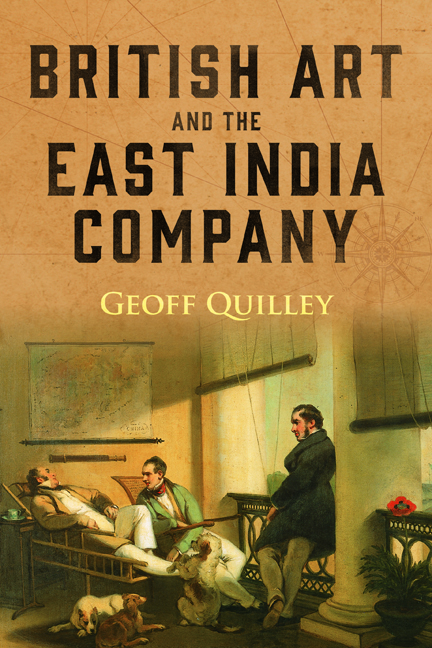Book contents
- Frontmatter
- Contents
- List of Illustrations
- Acknowledgements
- Chapter 1 Introduction: Corporate Patronage and Company Artists
- Chapter 2 ‘That Extensive Commerce’: the Maritime Image of the East India Company
- Chapter 3 Travels in India: Landscape and Colonial Patronage
- Chapter 4 Networks of Knowledge, Power and Cultural Exchange
- Chapter 5 The Cries of India: Colonial Power, Classification, and the Diffusion of Knowledge
- Chapter 6 By Way of China
- Chapter 7 Collecting India
- Chapter 8 Conclusion
- Select Bibliography
- Index
- Worlds of the East India Company
Chapter 3 - Travels in India: Landscape and Colonial Patronage
Published online by Cambridge University Press: 27 March 2021
- Frontmatter
- Contents
- List of Illustrations
- Acknowledgements
- Chapter 1 Introduction: Corporate Patronage and Company Artists
- Chapter 2 ‘That Extensive Commerce’: the Maritime Image of the East India Company
- Chapter 3 Travels in India: Landscape and Colonial Patronage
- Chapter 4 Networks of Knowledge, Power and Cultural Exchange
- Chapter 5 The Cries of India: Colonial Power, Classification, and the Diffusion of Knowledge
- Chapter 6 By Way of China
- Chapter 7 Collecting India
- Chapter 8 Conclusion
- Select Bibliography
- Index
- Worlds of the East India Company
Summary
Whatever the contested and controversial perceptions of East India Company commercial power and governance in Britain, its rapidly increasing territorial power in India itself opened up seemingly endless opportunities for British artists and patrons to engage in mutually profitable enterprises afforded by this novel expansion in colonial commerce. Following quickly in the footsteps of fellow artist-travellers such as Tilly Kettle and George Willison, as well as in his own track as appointed draughtsman to James Cook's second voyage (1772–5), William Hodges embarked for India in 1779 with the support of the East India Company in the form of a recommendation from Sir John Macpherson to Warren Hastings, the Governor-General, as an artist desirous of recording ‘the most curious appearances of nature and art in Asia’. From 1780 to 1783 Hodges travelled throughout Company territories in Bengal and Bihar, as a Company protégé, and on his return to London in 1784 he developed a productive and profitable career based on his Indian experiences and records for at least the next six years.
His example as the first professional European landscape painter to travel and work in India was also swiftly taken up by other artists: he travelled out at the same time, and on the same ship, as Samuel Davis, and was soon followed by Thomas and William Daniell, who were in turn succeeded by a swathe of professional and amateur draughtsmen, such as Charles D’Oyly, George Chinnery, William Havell, and many others. In particular, military personnel, familiar with the in-the-field techniques and practices of mapping and surveying those topographies already under, coming under, or under threat of, British control, increasingly turned their documentation of the landscape into aestheticized, ‘picturesque’ records for polite consumption by British viewers.
Hodges, then, is an appropriate place – so to speak – to start to examine British landscape representation in India from the late eighteenth to the early nineteenth centuries. In this chapter I want especially to consider the particular genre of landscape depiction as it arose in India during this period, which I suggest offered a novel representation of land and territory, distinct from earlier eighteenth-century landscape painting, in being peculiarly attuned to – and in certain senses determined by – Company interests.
- Type
- Chapter
- Information
- British Art and the East India Company , pp. 93 - 156Publisher: Boydell & BrewerPrint publication year: 2020



